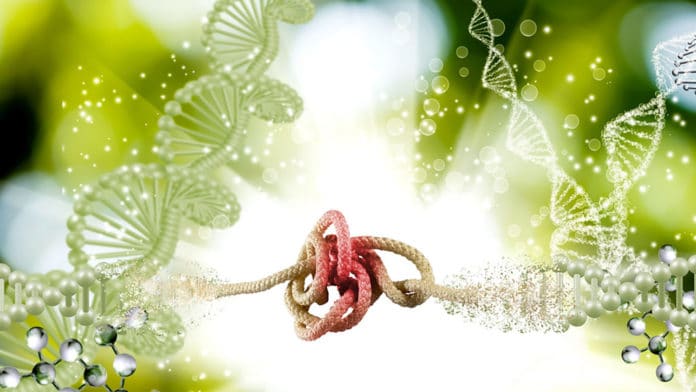Mutational hotspots are products of several evolutionary forces, including mutation rate heterogeneity. They can determine evolutionary outcomes and make evolution repeatable. But, the hotspots are often hard to identify.
In a new study, scientists from the Milner Centre for Evolution at the University of Bath have identified evolutionary hotspots in DNA where mutations are more likely. They revealed that unwound DNA tangles could create mutational hotspots in the genomes of bacteria.
Usually, evolution takes place by natural selection. Only those individuals who are adapted to their environment can survive and pass on their genes. The study has shown that the tangles in DNA strands could also influence evolution.
Scientists studied two bacterial strains of soil bacteria Pseudomonas fluorescens (SBW25 and Pf0-1). Removal of a gene that allows bacteria to swim causes both strains to evolve quickly. Both strains regained the ability to swim again, but with different routes.
One of the strains (SBW25) always mutated the same part of a particular gene to regain mobility. However, the other strain (Pf0-1) mutated in different genes each time the scientists repeated the experiment.
One strain evolved predictably, and the other was unpredictable. Why?
To know the reason, scientists compared the DNA sequences of the two strains. They found a region in SBW25 strain, which mutated in a predictable way, where the DNA strand looped back on itself, forming a hairpin-shaped tangle.
These tangles disrupt DNA polymerase during cell division, making mutations more likely to happen.
Removal of hairpin structure using six silent mutations eradicated the mutational hotspot. This causes the bacteria to evolve in a much wider way to regain their swimming ability.
Dr. Tiffany Taylor, from the Milner Centre for Evolution, said: “DNA normally forms a double helix structure, but when the DNA is copied, the strands are briefly separated.”
“We’ve found there are hotspots in the DNA where the sequence causes the separated strands of DNA to get twisted back on themselves – a bit like when you pull apart the strands of a rope – this results in a tangle.”
“When the DNA polymerase enzyme runs along the strand to copy the gene, it bumps into the tangle and can skip, causing a mutation.”
“Our experiments show that we were able to create or remove mutational hotspots in the genome by altering the sequence to cause or prevent the hairpin tangle.”
“This shows that while natural selection is still the most important factor in evolution, there are other factors at play too.”
“If we knew where the potential mutational hotspots in bacteria or viruses were, it might help us to predict how these microbes could mutate under selective pressure.”
Dr. James Horton, who has recently completed his Ph.D. at the Milner Centre for Evolution, said: “Like many exciting discoveries, this was found by accident. The mutations we were looking at were so-called silent because they don’t change the resulting protein sequence, so initially, we didn’t think they were particularly important.”
“However, our findings fundamentally challenge our understanding of the role that silent mutations play in adaptation.”
Journal Reference:
- James S. Horton, Louise M. Flanagan, Robert W. Jackson, Nicholas K. Priest, Tiffany B. Taylor (2021) “A mutational hotspot that determines highly repeatable evolution can be built and broken by silent genetic changes” is published in Nature Communications DOI: 10.1038/s41467-021-26286-9.
